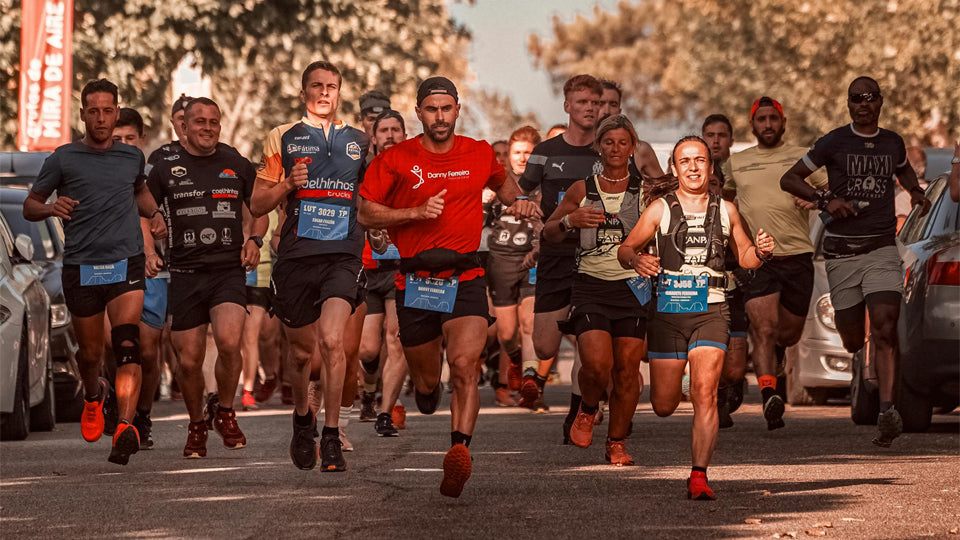De-stress race day: Strategies for a calm and focused mindset

Medical Term: Anxiety changed to worry
After 25 years of racing, I still get nervous before the big ones. I don’t see it as a bad thing, or really anything to treat as special or distinct, but part of the process. I’ve learned that jitters accompany pretty much any anticipatory event you imbue with meaning. What’s important is not the pre-race nerves (they’re coming whether you want them or not) but how you treat them. When felt, your jitters are first available to interpretation, and based on your priors, pushed into feelings of excitement or feelings of worry. When you really sit down to figure out what is making you nervous, it almost always comes down to control; that which you can and can’t. As a rule for endurance racing (and life), focus on what you can control and let the fates keep the rest. What you can control is the Expectations, Preparation, and Routine and what you can’t control is everything else. By recalibrating your expectations, preparing specifically for the demands of the event, and engaging a sturdy pre-race routine, you’ll meet your event focused and ready. Dispatch all meanderings and concerns not included in these categories. Do this, and the nerves you’ll feel pull the corners of your mouth up, not down.
Managing Your Expectations
Endurance races are famously unpredictable. They are often long with varied terrain and shifting weather and contain racers of differing abilities, strategies, and expectations all mixing and shuffling to maximize their advantage. There are so many variables (including the random ones) that the race will not play out in a preconceived way. Races are great because they are chaotic, so we must drop our Type-A tendency to plan-ahead and control what we can’t. Being successful in endurance sports is like surfing; let go and learn to ride chaos. Like thinking of the funny thing to say after the conversation has moved on, your prearranged strategy is no longer relevant. You must rejoin the conversation (and the race) as it’s happening if you want to keep up. Shift your focus to what can be controlled through these three basic mantras in your race.
- I will take smart risks
- I will quickly adapt if my risks fail
- I will have nothing left to give at the end of my race
In time, you’ll discern more signal from noise in the race chaos and take smarter risks. This isn’t something that can be taught in an article, it's something that must be experienced and felt. You’ll surf better and better waves and this discernment is made in the crucible of having chosen the wrong ones. My biggest race regrets are when I encounter the ‘Go Now!’ moment but my legs don’t follow. I’ll make excuses, but when it comes down to it, I lost my nerve. I’m most disappointed when I lack the courage of my conviction. It’s not the poor results that hang over me, it’s the big race where I didn’t live out the mantras. Somewhat paradoxically, and I’m not alone in discovering this, race results often improve after redefining motivation in this way. It’s not surprising; you are more engaged in the race, ready to respond in real-time, ready to take risks and ready to empty the tank. Simply put, you’re having fun. This can be a superpower if you can harness it. So most of what you planned to happen in the race won’t and the conventional motivators of winning, or getting on the podium, or top 10 or whatever doesn’t work as well as just having fun and leaving it all out there. Who knew?
Preparation For Your Race
Ask yourself, have I done my homework?
It’s of no consequence whether it’s a half marathon, triathlon, or local mountain bike race. If it matters to you, then preparation is required. How do you know it matters to you? Because you feel the nerves. Why do you feel the nerves? Because the race matters to you. A simple tautology, sure, but I’ve found the nerves are a form of communication that can be trusted. If the race I’m training for is Unbound, a 200-mile gravel race, the question is will my training deliver me in the condition to meet the demands of the race? If you’re unprepared for an event of this scale, merely engaging it is the risk and you’ll surely empty your tank, but well before the finish line. This is all to say, your preparation must correspond to the demands of the event. How well you’ve prepared will be determined on the big day of course, so trust the training plan, make sure it was thorough, and arrive feeling good about your current condition. That’s all you can do.
That said, the human body is enormously complex and even the perfect preparation, nutrition, and rest can deliver you to race day flat and unresponsive. It happens. A ‘perfect’ training regime drops me at top condition 80% of the time, but something is amiss the other 20%. I’ve had to make peace with this. You can control the amount of work you do to support your goal, you can’t control what version of you shows up on race day.
Ask Yourself again: Did I do all my homework? If yes, there’s nothing more to think about.
Establish a Routine
Ask yourself: Do I have a sturdy routine in place for the 101 things that I must accomplish before the start?
If you don’t, you need one. If you do, continue to refine until it’s science. Eventually, pre-race autopilot comes online (as I’m sure many of you know.) Give yourself over to that inner Type-A and plan, pre-arrange, think through it all. The goal is simple: do all the things you need to do and have all the things you need to have while time is abundant. Do this well and your race day will be seamless. Do this poorly and your race day will be panicked.Find the routine rhythms that work for you. Here’s a birds-eye view of my race routine as a guide -
2 Nights Out:
Gear - Clean, dialed
Food - Complex-carb dense
Hydration - Water, lots
Race Nutrition - In-hand
Sleep - Quality 8
1 Night Out:
Openers - Wake-muscles, moderate workout w/intensity
Food - Complex-carb dense
Hydration - Water, lots
Race feeding - If necessary, figure out who is feeding you during the race now
Pack - Find your system (I keep a race bag with two of everything I could possibly need)
Directions - How to get to the event and how long it takes to get there. Plan to arrive an hour before race start minimum for registration, warm-up, and everything else
Sleep - Quality 8
Morning of:
Food - Complex-carb dense ~3 hours before start
Hydration - Water with electrolytes, lots
Arriving at the Race:
Arrive - 1hr before race start minimum, preferably 1:30 hr for buffer
Register - Confirm race time and pin number
Set up your race feed
Warm-up start ~45 min before race start
Line-up ~10 min before race start
In Conclusion
You’ve arrived at the start line. Your expectations are realistic, your preparation was thorough, and your routine moved you calmly through your morning. Your race day nerves are present, but you feel excited. You’ve done everything you can do to arrive at this moment prepared. At the race start, you feel ready to push into the unknown, and because you’ve cultivated your expectations, preparation, and routine, you can’t wait. Have a great race!
Take the next step in your training regimen: Try any BRL Sports supplement risk-free! If our natural nutritional products aren’t the best you’ve ever used, simply return your purchase for a 100% refund — no questions asked!
Also in Fitness

The Qualification Process for the 2025 Boston Marathon
If you’re trying to qualify for the 2025 Boston Marathon or thinking about racing it one day, pay attention to these key steps and you’ll be toeing thestart line on April 21, 2025 or later!

Get the Most Bang for Your Buck With Sweet Spot Training



